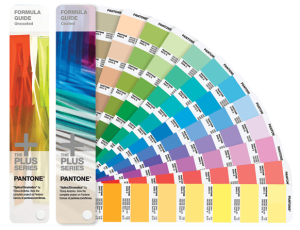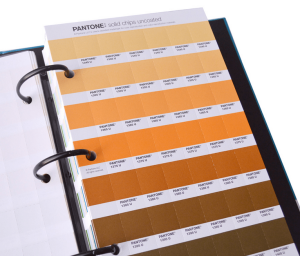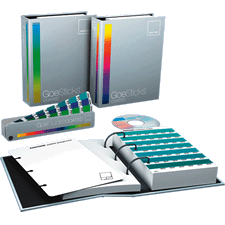The Pantone Color Book: The Shoe Designers Must Have Tool.
Your new shoe is ready to be manufactured, how do you explain the perfect shade of red you have in mind to the sample maker in China or Italy?
You could collect material swatches and cut color chips from around your office, attach these to your spec sheets, and Fed-Ex them to China. For unique materials or textures, this is a great idea. But, if you have 20 different shoes to spec with multi-color logos, this is not practical. You also need to consider what happens inside the factory. Your color swatch will have to be chopped up into a dozen pieces. One piece will go to the rubber factory, one piece to the mesh factory, one piece to the leather factory, one piece to the print shop, one piece to the shoelace factory, etc…etc… and the main shoe factory also needs to keep a piece to confirm the other factories get the color right. This is not practical for all the subcontractors.
To save time and money, professional shoe designers will use a color matching system. There are several systems, Toyo (from Japan), Ral (from Germany), and Pantone (from the USA). Don’t waste your time with anything else – PANTONE is it, period.
 Pantone Colors for Shoes
Pantone Colors for Shoes
A  It’s so simple! Just add the color number to your specification sheet.
It’s so simple! Just add the color number to your specification sheet.
This is nice bright orange, # 021 C.
“021” is the color name.
“C” means it’s from the coated book.
There are several other books. The “U” (uncoated book) and the “TP” (textile color book), etc. It’s not a bad idea to also note the page number.

Types of Pantone Books:
The colors are also available in a tear out chip book.
The Pantone company makes the same color books in cotton, nylon, and plastic chips sets. If you work for a big office, go for it! You will see that these are very expensive books. Pantone also makes an electronic color sensing system and many other color specifying products.
A final note on Pantone Books: When you get to the factory, have a look at their Pantone books. I was having trouble getting colors matched correctly at one factory. During a factory visit, I found the printing department was using the oldest, dirtiest, worn out Pantone book. AH HA!
The manager was very angry when I took his book and threw it into the trash, but he was very happy when I gave him a fresh new one.
Without the Pantone book, it is almost impossible to match colors correctly with your overseas factories. The books are expensive but your entire office can easily share one. This is a must-have shoe designers tool.
I would start with Pantone Set GP1501, then GG1504 if you need pastels and neon colors.
FGP200 has a deeper selection of earth tones if you are leaning that direction.

